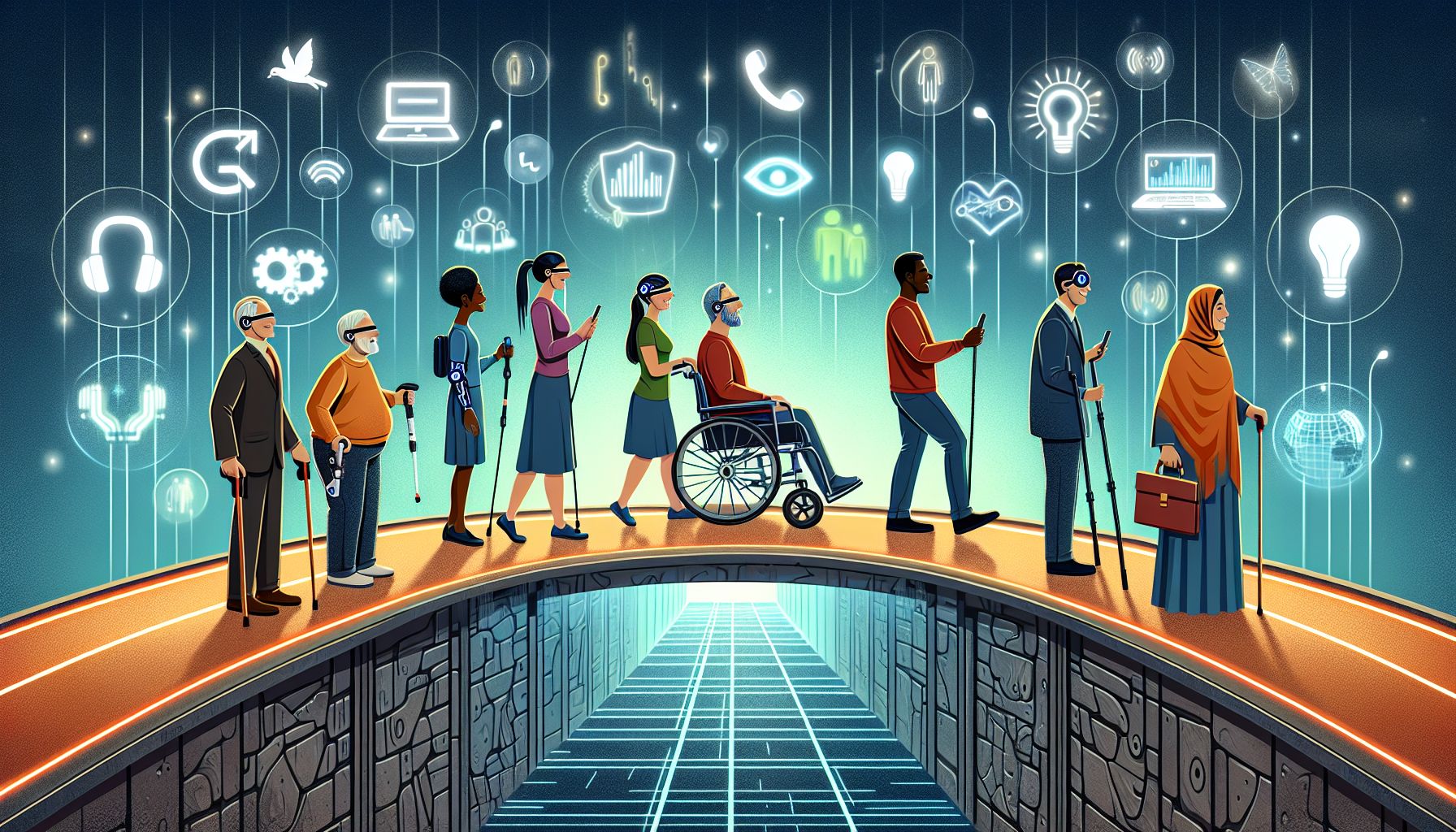📌 Let’s explore the topic in depth and see what insights we can uncover.
⚡ “Did you know that over 1 billion people worldwide live with some form of disability? Welcome to the era where technology doesn’t just make life convenient, it builds bridges of access and inclusivity!”
As we continue to push the boundaries of what is humanly possible, it’s easy to overlook the strides we’ve made in making technology accessible to everyone. In a world that is increasingly digitized, it’s more important than ever to ensure that everyone, regardless of ability, is included. 🔍 Interestingly, where inclusive technology innovations come into play. Inclusive technology, otherwise known as assistive technology, is designed to aid those with disabilities in their daily lives. These innovations are not merely an afterthought — they are a vital component in bridging the gap between ability and accessibility. From voice assistants to wheelchair technology, these groundbreaking inventions are changing lives and making the world a more inclusive place. In this post, we’ll dive into the world of inclusive tech, exploring some of the most innovative and impactful technologies designed to assist people with disabilities. We’ll also look at how these advancements are helping to create a more inclusive digital landscape, and what the future may hold for this exciting area of technology. 📌 Remember: Inclusion is not about making special accommodations, it’s about leveling the playing field.
💡 The Evolution of Inclusive Technology

"Empowering Abilities: Innovations in Inclusive Technology"
Inclusive technology has come a long way from its rudimentary beginnings. From early devices like hearing aids and Braille writers, we’ve now moved into an era where technology can help people with disabilities live independently, communicate effectively, and even explore new opportunities in work and play. The shift towards digital technology has played a significant role in this evolution. The internet, for instance, has opened up a world of possibilities, allowing people with disabilities to access information, communicate, and engage with the world in ways that were previously unimaginable. Similarly, advances in artificial intelligence and robotics have led to the creation of devices and software that can perform tasks, interpret data, and provide assistance in ways that were once the domain of science fiction.
🚀 Groundbreaking Innovations in Inclusive Technology
The last few decades have seen a surge in innovative technologies designed to make life easier for people with disabilities. Here are some of the most noteworthy:
**Voice Assistants
** Siri, Alexa, and Google Assistants have revolutionized the way we interact with technology. They allow users to control devices, search the internet, compose messages, and perform a myriad of other tasks using just their voice 👄. 🔍 Interestingly, particularly beneficial for individuals with mobility impairments or visual impairments.
**Wheelchair Innovations
** Wheelchair technology has advanced in leaps and bounds. From powered wheelchairs controlled by head movements, to smart wheelchairs that can climb stairs, these innovations are providing unparalleled mobility to those who need it most.
**Assistive Reading Technology
** Software like Kurzweil 3000 and Read&Write offer features like text-to-speech, predictive text, and immersive reading, making written content more accessible to individuals with dyslexia and other learning disabilities.
**Augmentative and Alternative Communication (AAC) Devices
** These tools provide a voice for those who struggle with speech. High-tech versions include devices that generate speech based on eye movements or slight facial gestures.
**Smart Home Technology
** From smart lights that can be controlled via smartphone, to doors that open at the sound of a voice, smart home technology can help individuals with disabilities live more independently.
🌍 Creating an Inclusive Digital Landscape
As we forge ahead into the digital age, creating an inclusive digital landscape is paramount. This means ensuring that websites, apps, and digital platforms are accessible to everyone, regardless of their abilities. Web accessibility involves designing and developing websites and web tools that people with disabilities can use. This includes considerations like color contrast for those with visual impairments, keyboard navigation for those with mobility impairments, and captions for those with hearing impairments. But it’s not just about making websites and apps accessible. It’s also about creating content that is inclusive. This means using clear and simple language, providing alternative text for images, and ensuring that videos have captions or transcripts. 📌 Tip: Use online tools like the Web Accessibility Evaluation Tool (WAVE) to check your website’s accessibility.
🚀 The Future of Inclusive Technology
The future of inclusive technology is bright, with many promising developments on the horizon. From AI-powered prosthetics that mimic natural movements, to brain-computer interfaces that could potentially unlock new modes of communication for those with severe physical impairments, the possibilities are virtually endless. As technology continues to advance, we can expect to see even more groundbreaking innovations that will help to bridge the gap between ability and accessibility. In the meantime, it’s up to us to champion inclusive design and strive to create a digital landscape that is truly accessible to all.
🧭 Conclusion
Inclusive technology is not just about creating devices and software for people with disabilities. It’s about breaking down barriers, fostering independence, and empowering individuals to live their lives to the fullest. As we continue to push the boundaries of what is possible, let’s remember to keep inclusivity at the heart of innovation. After all, technology should be a tool that brings us together, not one that leaves anyone behind. In the face of our digital future, let’s ensure that we’re not just creating technology for the many, but for everyone. Because in the end, an inclusive world is a better world for us all.
🤖 Stay tuned as we decode the future of innovation!
